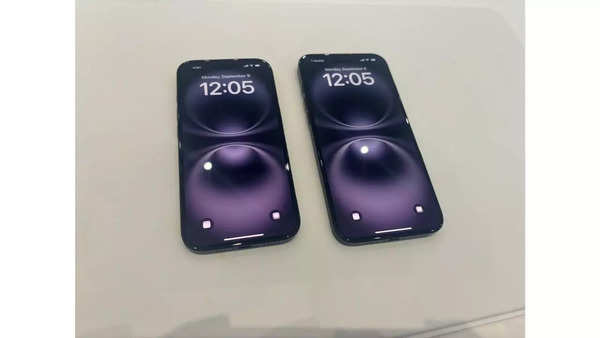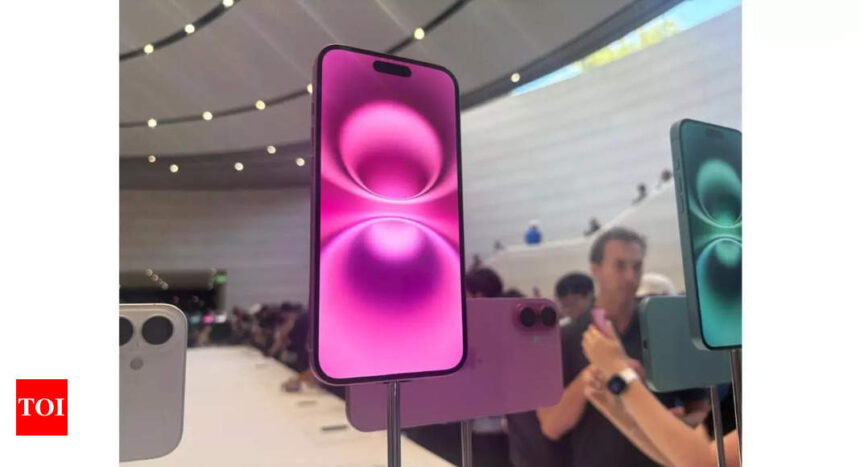Design and appearance
The iPhone 16 and iPhone 16 Plus maintain the sleek and stylish design that Apple is known for, but with subtle improvements. Both models feature a durable aerospace-grade aluminum frame, with glass backs available in several new colors. The iPhone 16 is compact with a 6.1-inch form factor, while the iPhone 16 Plus offers a larger 6.7-inch display for those who prefer screen real estate. The phone is slightly thinner than the previous generation, and the rounded edges make it comfortable to hold. Both the iPhone 16 and iPhone 16 Plus now feature the Action button that the company introduced last year with the iPhone 15 Pro model. Action Keys allow you to easily access various functions with a single press. Users can quickly open the camera, flashlight, or controls; switch between Ring and Silent and more. Along with this, the Action button and also access the in-app functions.
In addition to the Action button, the iPhone 16 and iPhone 16 Plus also come with a Camera Control button that allows you to quickly launch the camera, take photos and start recording videos. The Action button has replaced the mute button and is placed on the left side along with the volume control, while the Camera Capture button is located on the right side below the power button. The company also changed the camera placement on the iPhone 16 and iPhone 16 Plus. The iPhone 16 and iPhone 16 Plus models have the same vertical dual rear camera setup as the iPhone X. The USB charging port is placed at the bottom.
The iPhone 16 and iPhone 16 Plus have the same 6.1-inch and 6.7-inch screens as the iPhone 15 model. With a peak brightness of up to 2000 nits, this display is brighter than ever, ensuring excellent visibility in bright outdoor conditions. True Tone technology and enhanced color accuracy create a more immersive viewing experience, perfect for everything from streaming to gaming. The iPhone 16 model still has a 60Hz refresh rate, which means it doesn’t have the ProMotion technology that allows for a variable refresh rate of up to 120Hz. However, despite this, scrolling and animations on the iPhone 16 remain smooth and responsive.

Performance and camera
The iPhone 16 and iPhone 16 Plus are powered by Apple’s own A18 Bionic chipset. The company says that the new chipset in the smartphone offers smooth performance and also improves battery life. Built on 3-nanometer technology, the chipset claims to provide 30 percent higher performance for games while ensuring Apple Intelligence runs efficiently on the iPhone. During our time with the smartphone, they run smoothly. Apps launch quickly, and multitasking is effortless.
Both models are equipped with iOS 18, introducing new features such as customizable Home Screen layouts, improved widgets, and Apple Intelligence-AI that learns user preferences to provide smart suggestions. Apple Intelligence will be available as a free software update, with the first set of features rolling out in beta next month as part of iOS 18.1, iPadOS 18.1, and macOS Sequoia 15.1. Additional features will be released in the coming months.
As for the camera setup, the iPhone 16 and iPhone 16 Plus have a 48MP Fusion camera that offers a 2x optical quality Telephoto option, which essentially provides two cameras in one. This allows users to zoom in and frame images more easily. In addition, the Ultra Wide 12MP camera with autofocus supports macro photography, enabling detailed close-up photos along with wider photos. While we haven’t fully tested the camera yet, our initial experience impressed us with its accuracy and detailed results. For a more in-depth analysis, you’ll have to wait for the full review.
What we think
With new camera buttons, action buttons, and Apple Intelligence, the iPhone 16 and iPhone 16 Plus have the potential to be big hits. Stay tuned for our review to find out if they are worth the upgrade.




